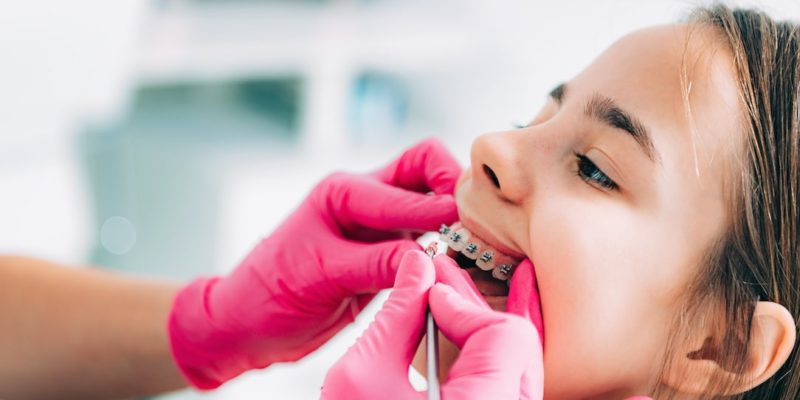Signs Your Child Might Need Early Orthodontic Care

Planning orthodontic care now can save your child time, money, and pain later in life. In fact, receiving early treatment as a child may prevent tooth extraction as an adult, or even the need for surgical procedures. If you have a child that is near the ages of 7 or 8, here are the signs that they might need orthodontic care at an earlier age.
Signs Your Child Might Need Early Orthodontic Care
Some children are excited to get braces because it makes them feel older. However, some children are scared of the dentist and this next natural step in their oral healthcare.
If your child begins to show any of the below signs, or if your family dentist has recommended that your child see an orthodontist, contact Dr Ania to schedule an appointment:
- Difficulty chewing
- Thumb-sucking after the age of 5
- Speech impediments
- Protruding teeth
- Shifting of the jaw when your child open or closes their mouth
- Crowded front teeth
The Orthodontic Care Process
Here at Dr. Ania’s office, we now offer digital impressions for orthodontics. Digital impressions have grown in popularity as a result of them being both a more accurate and more comfortable way of getting a dental impression.
Digital impressions offer increased patient comfort by eliminating the goop and gagging that comes with traditional impressions. The 3D digital model they create captures the contours of tooth and gingival structures in great detail, producing an accurate digital orthodontic scan in just minutes. Digital impressions, according to Orthotown, eliminate issues and streamline appliance fabrication.
Two-Phase Treatment Plan
It’s estimated by orthodontists that roughly 45% of children need braces to fix functional problems. Dr. Ania offers a two-phase orthodontic treatment that specializes combining teeth straightening with physical and facial changes. The purpose of this two-phase treatment is to maximize the opportunity to accomplish the ideal facial aesthetic and functional results all at once — that will remain stable for your child’s entire life.
Phase One
Phase one is early treatment that begins in childhood. The goal of this phase is to help the jaw develop in such a way that will accommodate all of the permanent teeth and improve the way the upper and lower jaws come together. More often, children show early signs of jaw problems as they continue growing and this treatment in phase one can correct that.
Resting Period
After phase one is a resting period before phase two begins. During this time, your child’s remaining permanent teeth are left alone as they begin to erupt. In this resting period, we continue to monitor your child’s progress. After the first phase, their teeth aren’t yet in their final positions. Selective removal of certain baby teeth may be in the best interest of enhancing eruption during this resting period. Due to this, periodic appointments for observation are typically necessary, usually performed every six months.
Phase Two
Phase two typically begins in the preteen years. The goal of phase two is to make sure each tooth has an exact location in the mouth where it works properly alongside the lips, cheeks, tongue, and other teeth. We will begin the second phase when all permanent teeth have erupted. This phase usually requires wearing braces for an average of two years. Once the braces are removed, a retainer is typically worn for several years to ensure you keep your newfound perfect smile.
Caring for Braces
It’s easy for braces to get dirty due to all the wires and brackets that can easily trap food. If your kid gets braces, you’ll need to make sure that they are working to keep their teeth clean. KidsHealth from Nemours explains that children should avoid popcorn, hard and sticky candy and gum, sugary soda, and juice because they can damage braces and contribute to tooth decay.
When braces are first applied, your child might be uncomfortable due to the pressure the braces put on the teeth, they further explain, however, taking over-the-counter pain relievers and eating soft foods for a few days after can help if this pain occurs.
Unfortunately, sometimes wires and brackets can come loose. When this happens, your orthodontist will just need to reapply the problem wire or bracket so it doesn’t poke your child in the mouth. Further, using things like orthodontic wax can cover any sharp spots that could irritate the inside of the cheeks and gums.
Bring Your Child to Dr. Ania
If you are ready to get your child started on orthodontics, make an appointment with Dr. Ania by calling (303)-872-9940. Dr. Ania believes that a brilliant smile radiates joy, good health, and vitality. To set your children up for great oral health for the rest of their lives, start orthodontic care early with this two-phase treatment from Dr. Ania. Learn more today!


